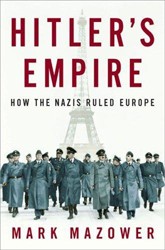In light of the widespread and rising tide of anti-Semitic rhetoric and physical violence against Jews in Europe, this book is a timely reading. The European Union was established in 1993 as an economic and political organization. The founders hoped to tame hypernationalism and its ugly offshoots racism, discrimination, xenophobia, and anti-Semitism. R. Amy Elman, a professor of social science at Kalamazoo College, explores how and with what success the EU has protected Europe’s Jewish communities. From its beginnings, a central EU agency has been tasked with collecting and distributing data on incidents that appear to deviate from “European values.”
Elman describes reports, pronouncements, and legislative measures that have been authored and enacted by the EU as a whole and by its twenty-eight member states. EU officials and elites have tended to view anti-Semitism as a phenomenon of past history, and “the new anti-Semitism” is rarely confronted as a specific issue. EU agencies and member states are reluctant to call out the perpetrators of today’s anti-Semitism. It is easier and more politically correct to blame the ”usual suspects” — right-wing extremists and neo-Nazi sympathizers.
Unfortunately, this book is difficult to follow, due to both the EU’s cumbersome structure and the author’s unclear presentation. For example, the responsibilities of individual agencies and the relationships between agencies are poorly explained. Elman points out a glaring omission in the EU’s approach: an organization-wide definition of antisemitism has never been officially adopted. A working definition was formulated with the assistance of European Jewish groups in 2005; this definition, which appears in the appendix, was quietly withdrawn from the EU website.
The author provides useful in-depth case studies of Austria and Sweden. Case study comparisons reveal unexpected conclusions. Austria, long considered the fount of Jew hatred, a state which included former Nazis in its post-World War II governments, was also the first member state to pass anti-Holocaust denial legislation and was zealous in enforcing such measures against violators. Neutral Sweden boasts of its humanitarian ideals, yet Sweden collaborated with the Nazis and turned away Jewish refugees. Sweden has refused to condemn suicide bombings and fails to adequately protect its Jewish community from vicious propaganda and assault.
The last section of this work presents findings from a survey of European Jews regarding their experiences. Many respondents have been targeted for anti-Semitic abuse. A substantial percentage are fearful for their safety and that of their families. Many avoid Jewish events and refuse to display items that would identify them as Jews. Some are seriously considering leaving Europe. Valuable passages describe the role of Israel in “the new anti-Semitism.” Tribute is paid to the Jewish Documentation Center in Vienna and the European Jewish Congress, which continue to attempt to steer Europe toward tolerance, and the American Jewish Committee, which translated the working definition of antisemitism into all the languages of member states after the EU neglected to do so. The latest data presented are for 2013, and since then the situation has only become more dire. There is an irony in the status of European Jews today. Modern Jews are generally multi-dimensional individuals. Elman calls them “the most European of Europeans,” yet they remain aliens in their homelands.




